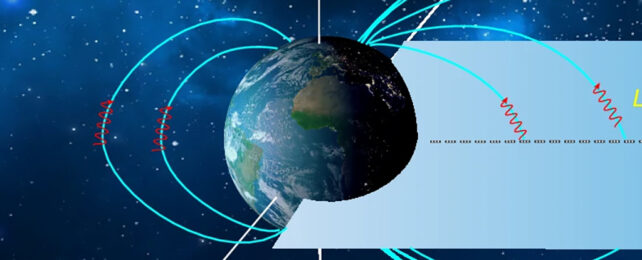An international team of astronomers has detected mysterious chirping signals in an unexpected region of space, raising major questions about how they're created.
Known as chorus waves, these signals are split-second bursts of electromagnetic radiation emitted from high above Earth's surface. When converted into an audio format and drawn out, they sound eerily like birds chirping.
We've known about them for decades, and the consensus is that they're caused by plasma instability: ionized gas falling out of equilibrium and spilling waves of electromagnetism in distinct patterns.
You can take a listen below:
Until now, the furthest from Earth they've been detected is 51,000 kilometers (31,690 miles). That's around the spot where Earth's magnetic field appears most like a magnet with distinct, opposing poles; a feature physicists thought was critical in creating the necessary instabilities in plasma flowing through the Solar System.
However, new research has found bursts of radiation with very similar properties some 165,000 kilometers (102,526 miles) away from our planet, where Earth's magnetic field is much more distorted. It seems chorus waves are not as closely tied to a neatly dipolar magnetic field as we thought.
"Such similarities indicate that their generation is not uniquely determined by the local environment and that they can develop anywhere in space," write the researchers in their published paper.
The research relied on a close analysis of high-resolution imagery from the NASA Magnetospheric Multiscale (MMS) satellite mission, launched in 2015, to identify the waves so far from home.
And although the findings challenge some of the current assumptions about chorus waves, one previously hypothesized process was observed for the first time: the transfer of energy from plasma particles to chorus waves occurs in regions where electrons are relatively scarce, known as electron holes.
It's evidence that a phenomenon known as electron cyclotron resonance is at play and powering the distinct chirping patterns seen here, where electron frequency and wave frequency are both matched, driving greater energy transfer.
"These electron holes associated with chorus waves have been well studied by simulations and have now been observed in situ," write the researchers.
As chorus waves represent some of the strongest electromagnetic radiation pulses in space – key to Earth's radiation belt and a potential threat to satellite operations – we need to know as much about them as we can to understand when to expect them.
Other planets have chorus waves too, including Mars, Jupiter, and Saturn, so these discoveries tell us more about the wider cosmos and how magnetic fields are shaped around planets.
"Our observations may help to resolve long-standing controversies regarding chorus emissions and in gaining an understanding of the energy transport observed in space and astrophysical environments," write the researchers.
The research has been published in Nature.
